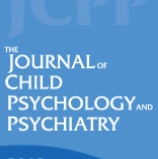This is news, and not just for the Internet safety field. It’s important for policymakers, parents, educators, researchers, healthcare providers and journalists to know about: In the Journal of Child Psychology, sociologist David Finkelhor, one of the US’s most prominent experts on child victimization, challenges the “alarmism reflected by so much of the scholarly and journalistic literature” about youth and technology. He suggests in a commentary in the Journal’s latest issue that the “techno-panic mindset” has shaped not only the public policy agenda but also the research agenda – even though social science “can be at its most useful when it tries to allay social policy driven by alarm and emotion.”
 Dr. Finkelhor, director of University of New Hampshire’s Crimes Against Children Research Center (CCRC), also says social science may have the responsibility “to provide perspectives from those whose voice may be poorly represented in the public discourse,” in this case “young people themselves.” He asks what the research agenda would look like if it were set by them. He’s not alone in wondering this. Last year, the authors of an EU Kids Online report wrote, “Adult society (parents, teachers, policy makers and the media) has shaped the policy agenda for understanding online risk…. Most research … has asked children about risks that worry adults rather than discovering what concerns children themselves” (see this).
Dr. Finkelhor, director of University of New Hampshire’s Crimes Against Children Research Center (CCRC), also says social science may have the responsibility “to provide perspectives from those whose voice may be poorly represented in the public discourse,” in this case “young people themselves.” He asks what the research agenda would look like if it were set by them. He’s not alone in wondering this. Last year, the authors of an EU Kids Online report wrote, “Adult society (parents, teachers, policy makers and the media) has shaped the policy agenda for understanding online risk…. Most research … has asked children about risks that worry adults rather than discovering what concerns children themselves” (see this).
The 3 assumptions
Finkelhor points to “three alarmist assumptions” found in the news coverage and research: that the digital environment is “perilous for youth” and, unlike other environments where they spend time, “amplifies deviance”; that problems which show up in the digital environment are unique to it and fostered by its “specific dynamics” (e.g., cyberbullying or sexting); and that the solution to all this is “specialized Internet education.”
Viable counter assumptions
Those assumptions are not evidence-based, Finkelhor writes, urging that they be given “more explicit critical attention.” On the other hand, he writes, “there are many possible hypotheses about how the technologies could be protective, but these have attracted scant attention in comparison to the endangerment speculation.” So in the commentary, he looks at three counter hypotheses:
- The Internet is “no more perilous and perhaps less perilous” than offline environments. With that, he offers a question to consider – “Does the digital technology promote more risk or more safety?” – and spends a whole page (about a third of the article) laying out indicators in the research that being in digital environments is not more dangerous and may actually be safer than being in offline ones.
- The problems that turn up in the digital environment are not unique to it but rather “extensions of social interactions or media consumption problems that cut across environments” and are better understood in the context of a child’s life as a whole. He points to “several strands of research” that show support for this counter hypothesis and poses this question for further investigation: “Should we define problems as being unique to a technology, like cyber-bullying or cyber-stalking?”
- The appropriate response “should not be specialist Internet safety training but more generic education about life skills, social interaction, emotional intelligence and media literacy.” Finkelhor mentions several problems with focusing prevention education on technology: tech solutions (like learning how to set privacy settings) keep changing and could be superficial or irrelevant, Internet safety education (ISE) concerns “a domain where youth are most skeptical of adult credibility and expertise,” and ISE “may compete with and sideline other [risk prevention] programs that have been refined and tested through years of research” – and most ISE is not evidence-based and “not based on established effectiveness principles” (see this about a 2013 study by his colleagues at CCRC).
A bit of historical context
 The Journal of Child Psychology and Psychiatry asked Professor Finkelhor to write this commentary in response to the lead article of its June 2014 issue: a review of the research literature on “Harms experienced by child users of online and mobile technologies: the nature, prevalence and management of sexual and aggressive risks in the digital age,” by psychologists Sonia Livingstone at the London School of Economics and Peter Smith at University of London. He submitted it, he writes, not to challenge any of their findings – which in fact “dampen many of [“the techno-panic mindset’s”] more anxious notions.” Instead, he submitted the commentary “to shine light on where much of the scholarly community has focused its energy, a focus that has grown and not abated even with the emergence of reassuring findings.”
The Journal of Child Psychology and Psychiatry asked Professor Finkelhor to write this commentary in response to the lead article of its June 2014 issue: a review of the research literature on “Harms experienced by child users of online and mobile technologies: the nature, prevalence and management of sexual and aggressive risks in the digital age,” by psychologists Sonia Livingstone at the London School of Economics and Peter Smith at University of London. He submitted it, he writes, not to challenge any of their findings – which in fact “dampen many of [“the techno-panic mindset’s”] more anxious notions.” Instead, he submitted the commentary “to shine light on where much of the scholarly community has focused its energy, a focus that has grown and not abated even with the emergence of reassuring findings.”
It’s not that Finkelhor doesn’t understand the imbalance. In a new media era there are unprecedented “incentives for scholarly entrepreneurship to run ahead of science,” “new funding opportunities to be leveraged by accepting or even fanning the popular fears” and “cachet and appeal to establishing new fields,” he writes. But “where is the research about the technology’s virtues?” he asks, naming a number of them. This is one part, at least, I won’t give away, but I will tell you my own answer to his question. For balance, I’ve looked to the newer field of social media research that, as I saw it, was launched in the US by a $50 million investment of the MacArthur Foundation in the work of more than two dozen researchers involved in the “Digital Youth Project,” kicked off in 2006 by a paper by now University of Southern California media professor Henry Jenkins: “Confronting the Challenges of Participatory Culture: Media Education for the 21st Century.”
Up there at the top, I wrote that this commentary of David Finkelhor’s is news. It is – I hope news that gets widespread attention. I hope even more that we’ll look back on it as a turning point.
Related links
- About several psychologists’ views on the widespread negative bias in the worldwide public discourse on youth and media: “Neutralize the negativity bias against kids’ Net use” and “To grasp social media’s effects we need a grasp on social media”
- Dr. Finkelhor’s last giant milestone for the Internet safety field was his 2010 paper “juvenoia,” a term he coined. Here are Part 1 and Part 2 of my blog post on that. He was also lead author of the earliest research in this country on youth Internet safety, starting in 1998.
- Henry Jenkins’s 2006 blog post about his MacArthur-funded paper
- My post last fall challenging the idea that “Internet safety” is a subject that can be taught, based on a major study by Lisa Jones and other colleagues of Finkelhor’s at the CCRC (and referenced in his commentary)
- Illustrations of all the insight that can be obtained from talking with young people about their experiences in digital media: “SID 2014: Teens’ own (wise) perspectives on life with social media”; “Online risk in kids’ own words: A research milestone”; “Australian teen panelists on social media”; and “Students on bullying: Important study”

Thank you; a very fact-based and important article. The resources wasted on the current management of those found guilty of any sexual offense are due to legislation passed with no attention whatsoever to facts or evidence. This area is an extension of that and, left unchecked, will gobble up even more precious resources and accomplish nothing.